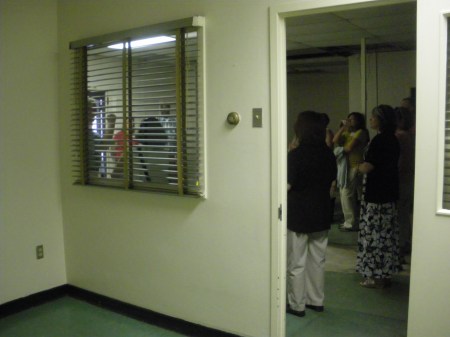
USHMM: Shattered storefront of a Jewish-owned shop destroyed during Kristallnacht (the “Night of Broken Glass”). Berlin, Germany, November 10, 1938. — National Archives and Records Administration, College Park, Md.
I get e-mail from time to time from the U.S. Holocaust Memorial Museum (USHMM) in Washington, D.C.
Tonight, November 9, is the anniversary of Kristallnacht in 1938. Jill Pauly lived through it. She tells her story so that we will remember, that we will never forget. “Kristallnacht” is German for “night of crystal.” But in this case, the crystal was broken glass, the broken windows of Jewish shops and homes. Kristallnacht was the “Night of Broken Glass.”
Dear friend,
I’ll never forget how scared I was 77 years ago on Kristallnacht.
This wave of antisemitic attacks throughout Germany and Austria caused my family to flee our small German town. We drove to a relative’s apartment in Cologne, and my grandparents forced my sister and me to sit on the car floor so we wouldn’t see the violence on the streets.
That evening and for many following it, the men in my family drove all night to evade German officers and avoid becoming some of the 30,000 men who were arrested just for being Jewish.
This was a major turning point for my family, when our lives became dangerous and our future uncertain. Learn more about experiences of families like mine, as well as the origins and aftermath of Kristallnacht.
Kristallnacht was a watershed moment in Nazi Germany’s persecution of Jews, indicating an increase in radical, violent antisemitism. Many Jews tried to emigrate as soon as possible after the pogroms.
Today, Kristallnacht is seen as a warning sign of the Holocaust—an indicator of the horrors to come that far too many people ignored.
The Museum strives to learn from this history in order to prevent atrocities in the future. This is why we recently launched, in partnership with Dartmouth College, the Early Warning Project. It aims to give leaders from around the world more reliable information on the risk of mass atrocities to inspire action and help save lives.
On this anniversary, I encourage you to learn more about Kristallnacht and reflect on how we can respond to threats of genocide today.
Sincerely,
Jill Pauly
Holocaust Survivor and Museum VolunteerPhoto: Jill Pauly speaks with Museum visitors. US Holocaust Memorial Museum
“Never again” starts now, if we start it.





 Posted by Ed Darrell
Posted by Ed Darrell 




































